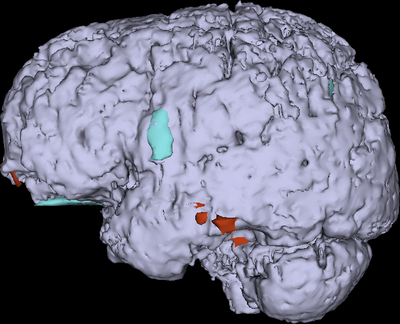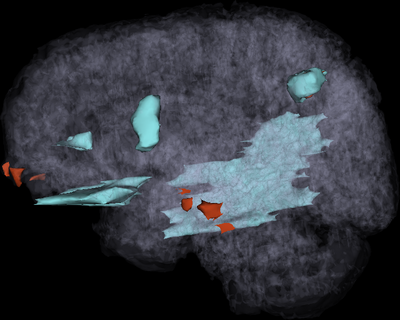TBISegmentation TutorialContestSummer2011
This is the page for the Slicer 3.6 tutorial
Automatic Segmentation of Traumatic Brain Injury MRI volumes using Atlas Based Classification and 3D Slicer
by
Andrei Irimia, Micah Chambers and Jack Van Horn
UCLA Laboratory of Neuro Imaging (http://loni.ucla.edu/).
Contents
Background
Traumatic brain injury (TBI) is associated with an estimated 1.7 million cases in the United States alone every year, with an estimated 1.2 million ER visits and over 50,000 deaths. Over 5.3 million cases of required long‐term daily assistance exist as a result of TBI, which results in health care costs of over $60 billion/year. Despite many innovations, progress towards patient‐tailored characterization of the structural and functional substrates associated with TBI‐related neural and cognitive impairment remains dissatisfactory and the relationship between neurophysiological markers of cognitive dysfunction and TBI structural damage has not been acceptably elucidated 3D Slicer offers a powerful and unparalleled set of tools for the exploration and quantification of TBI.
Purpose
This tutorial has four purposes, namely it allows the user to
- acquire familiarity with several MR sequences commonly used for TBI imaging
- learn how to apply ABC to perform joint co-registration and automatic segmentation of TBI volumes
- acquire expertise on how to identify and characterize TBI pathology using various MRI sequences
- gain exposure to informed strategies for quantification of TBI-related edema or hemorrhage
Value of the tutorial
This tutorial demonstrates that 3D Slicer offers powerful methodologies for the visualization of pathology due to traumatic brain injury. Use of multiple MR image channels greatly enhances the ability to study and understand TBI structure/extent, and ABC is shown to be a robust algorithm to perform joint co-registration and automatic segmentation of TBI. Furthermore, completion of this tutorial allows one to acquire useful expertise on how to identify and characterize TBI. Use of 3D Slicer can offer informed strategies for quantification of TBI-related edema or hemorrhage and for improved insight of clinical relevance.
Prerequisites
Please note that the tutorial assumes that you are using Slicer 3.6 or later, and that you have already completed the Visualization and the Interactive Editor Tutorials by Sonia Pujol. The tutorial has been developed using Windows 7, but it is also compatible with Windows XP, Linux 32 and 64 bit, as well as Mac Darwin.
Tutorial and Data
Team Members and Mentors
- Andrei Irimia, Ph.D. (Postdoctoral Scholar, Laboratory of Neuro Imaging, UCLA)
- Micah C Chambers, MS (Graduate Student in Bioengineering, UCLA)
- John D Van Horn, M.Eng., Ph.D. (Assistant Professor of Neurology, UCLA)
- Paul M. Vespa, M.D., F.A.A.N., F.A.C.N. (Professor of Neurology and Neurosurgery, Director of the Brain Injury Research Center, UCLA)
- Arthur W. Toga, Ph.D. (Distinguished Professor of Neurology, Director of LONI, UCLA)
- Jeffry R. Alger, Ph.D. (Professor of Radiology, UCLA)
- David A. Hovda, Ph.D. (Professor of Neurosurgery, UCLA)

